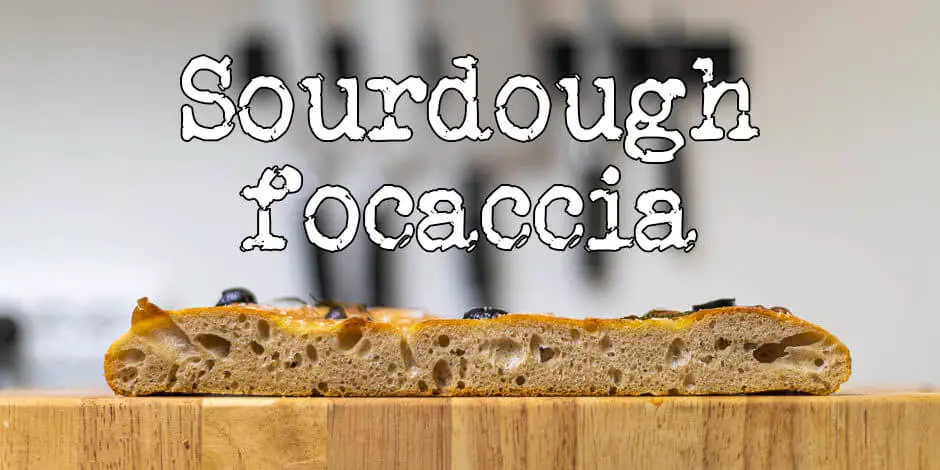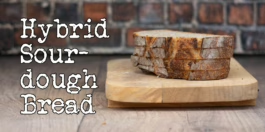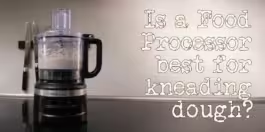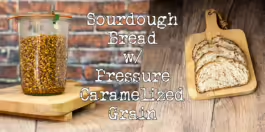Bread is one of the most wonderful accompaniments for a hot dish, and the still warm-out-of-the-oven focaccia, with its oily exterior and salty crunch, is just one of the best ones. It’s a true crowd-pleaser. This is my sourdough focaccia recipe.
Focaccia has been baked for thousands of years and is still one of the most popular tablebreads in Western Europe. It’s very easy to make, and today I will show you how you can make a super simple one using sourdough starter instead of yeast.
If you are just here for the recipe, you can press the button underneath to be automagically transported to the recipe:
Jump to Recipe Jump to VideoThe origins and history of focaccia
Focaccia has a long and illustrious history dating all the way back to ancient Rome with a bread called panis focacius, meaning something along the lines of bread from the hearth.
The bread was prepared on the hearth on a hot fire, on a heated tile. The basic recipes for the bread are meant to have come from the Etruscans, who were a civilization that resided in the northern Italian peninsula from about 900 BCE to 90 BCE when they joined the Roman empire.
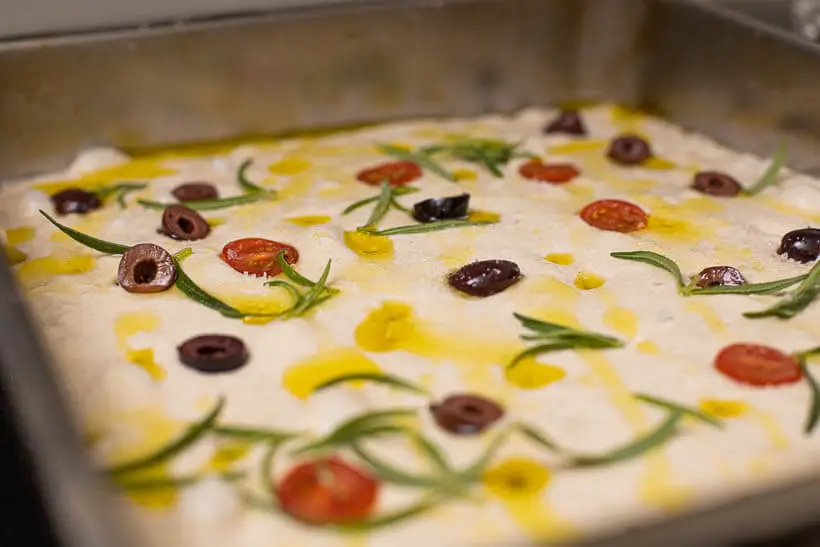
Variations of focaccia
There are countless versions of focaccia, from the hard and crunchy focaccia di Camogli to the focaccia col formaggio, two thin pieces of dough with a Stracchino cheese in between.
There is even one that is almost cake-like, called focaccia dolce, that is sprinkled with sugar, raisins, and honey, and maybe more sweet ingredients.
Variations of toppings
The most common modern preparation of focaccia is called focaccia al rosmarino, which is focaccia topped with salt and sprigs of fresh or dried rosemary.
Other variations may include garlic, basil, or sage. The last one is called focaccia alla salvia.
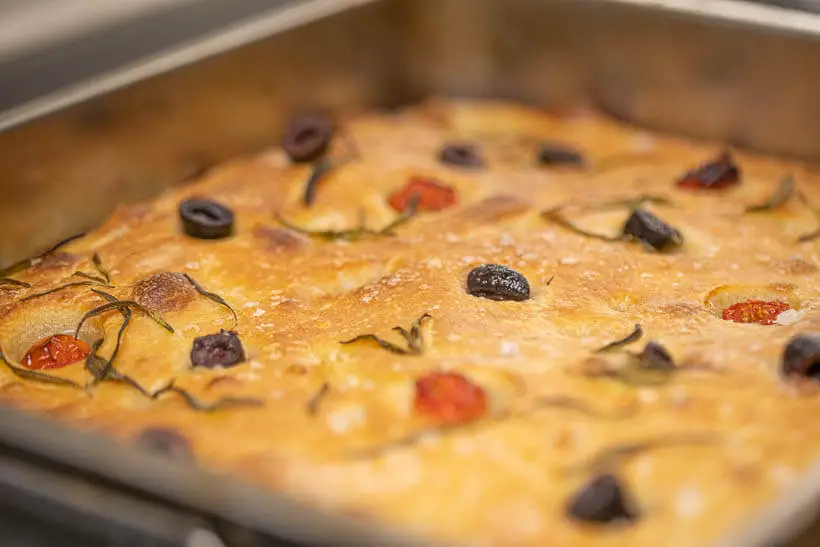
The formula in this sourdough focaccia recipe
Vitals
| Total weight | 1515 grams |
| Pre-fermented flour | 8.7% |
| Hydration | 80.0% |
| Yield | 1 delicious focaccia |
The dough
This dough does not use a levain, but an active sourdough starter must be used. If you don’t have one, you can follow my simple guide to make your own.
Although most bread is made using bread flour for the added support of the extra gluten in that flour, you need a lower protein flour when you want to achieve a softer crust and crumb.
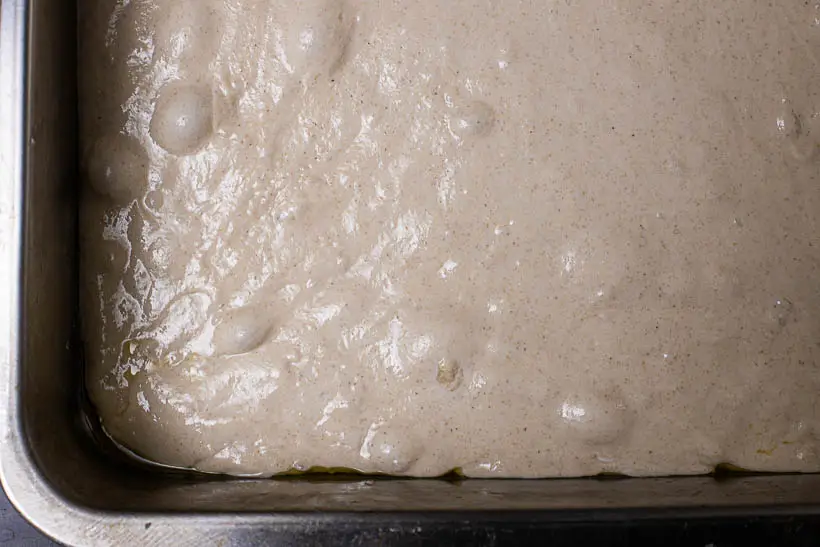
That’s why this bread is made with 70% all-purpose flour and 30% bread flour.
A bit of olive oil is also added to the dough to soften the crumb.
The hydration is 80%, making for a moister crumb and bread that will stay fresh longer.
| Weight | Ingredient | Baker's Percentage |
|---|---|---|
| 528g | all-purpose flour | 70.0% |
| 226g | bread flour | 30.0% |
| 589g | water | 78.1% |
| 14g | salt | 1.9% |
| 143g | starter (100% hydration) | 19.0% |
| 15g | olive oil | 2.0% |
As always, if you want to play around with the formula or tweak it, you can do it here in my Bread Calculator.
If you use a different pan size, you can rescale the recipe to the measurements of your pan right here. Just type the numbers and tab out, and it will be calculated automatically. Also, a rescaled formula will be available.
The conclusion of this sourdough focaccia recipe
Over the years, I’ve made many focaccia breads for many dinners. They were always made with yeast because that was how I was taught to prepare bread.
This one with sourdough is just so much more delicious, flavorful, and moist. The only difference from the yeasted one is that it takes a bit longer to prepare, but this is not an all-day bread by any means.
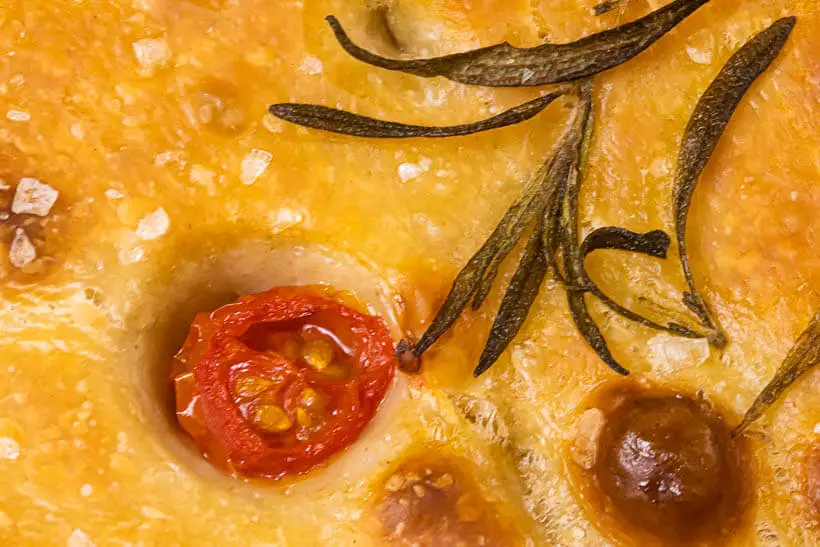
The crust is soft and wonderfully caramelized. Dotted with delicious cherry tomatoes and gorgeous kalamata olives. Full of crunchy Maldon salt.
The crumb is soft as a pillow, full of both tiny and large fermentation bubbles. It is great for tearing off a piece and stuffing it in your mouth.
So perfect.
Please share this sourdough focaccia recipe on social media
This is my recipe for sourdough focaccia. If you like the recipe, please share it with like-minded bakers on social media.
If you make it and post it on Instagram, please tag me as @foodgeek.dk so I can see it. That would make me very happy.
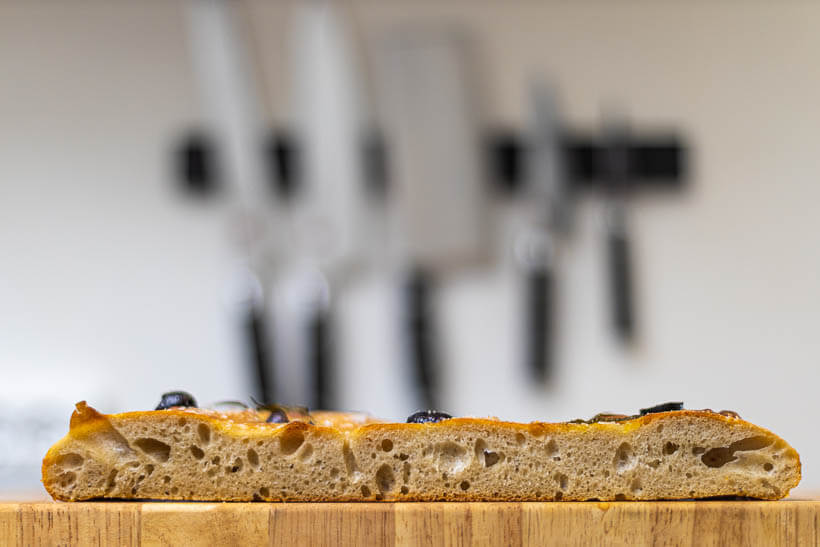
Ad links! The links for equipment and ingredients in this recipe are affiliate links, which means I will receive a commission if you purchase the product.
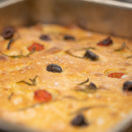
Sourdough Focaccia
Equipment
Ingredients
Dough
- 528 g all-purpose flour
- 226 g bread flour
- 589 g water, divided 539g for initial mix, 50g later
- 14 g salt
- 143 g sourdough starter 100% hydration
- 15 g extra-virgin olive oil
Toppings
- fresh rosemary
- olive oil
- Maldon salt
- kalamata olives
- cherry tomatoes
Instructions
Mix dough
- To a bowl, add all-purpose flour, bread flour, and salt. Mix with your fingers to combine.
- Add sourdough starter, fed and grown to its peak, on top, and add 539g of water.
- Mix with your hands until it comes together. Then start folding the dough over itself, then turn the bowl a little and repeat.
- When you have a cohesive dough, gauge it. If it's very wet and soupy, don't mix in the rest of the water; if it can take more, add more water in stages until you feel like it's cohesive but pretty wet.
- Once you're happy with the dough, you should see the first signs of gluten development.
- Add exter-virgin olive oil on top and fold that into the dough.
- Leave the dough to rest for 30 minutes under a damp dishtowel.
Bulk Fermentation
- Now it's time to do three sets of stretch and folds spaced out by 30 minutes.
- If you don't know how to stretch and fold, look at how I do it in the companion video.
- Grab your roasting pan and smear it with olive oil.
- After finishing the last set of stretch and folds, add the dough to the roasting pan. Press the dough out into the corners and stretch it as far as it goes without tearing it.
- Put a damp towel over the top and let the dough rest for 30 minutes.
- Over the next hour, do two more stretches to get the dough as close to the corners as possible.
- Then, let the dough rest until it's appropriately fermented, bubbly, and light. It took about two hours at around 21°C/70°F for me.

- When there's about half an hour left of fermentation, turn your oven to 230°C/450°F. I used fan assist.
Dimple and add toppings
- When it's finished fermenting, grab the dough and gather all your toppings.
- Dimple the dough with your fingers. Press down all the way to the pan.
- Then, splash one to two tablespoons of olive oil over the dough.
- Add all the toppings. Pushing larger toppings into the dough so they won't fall out after the bread has finished baking.
Bake
- Put the pan in the oven and bake for about 30 minutes.
- If your oven heats unevenly, invert the pan about halfway through baking.
- When the end of the bake is nearing, keep an eye on the dough and take it out when it's sufficiently browned. If the bread isn't brown enough at 30 minutes, extend the baking time until it looks done to you.
- Leave it to cool for a couple of minutes, remove it from the pan, and put it on a wire rack.
- Serve right away or let it cool. It's all good.



